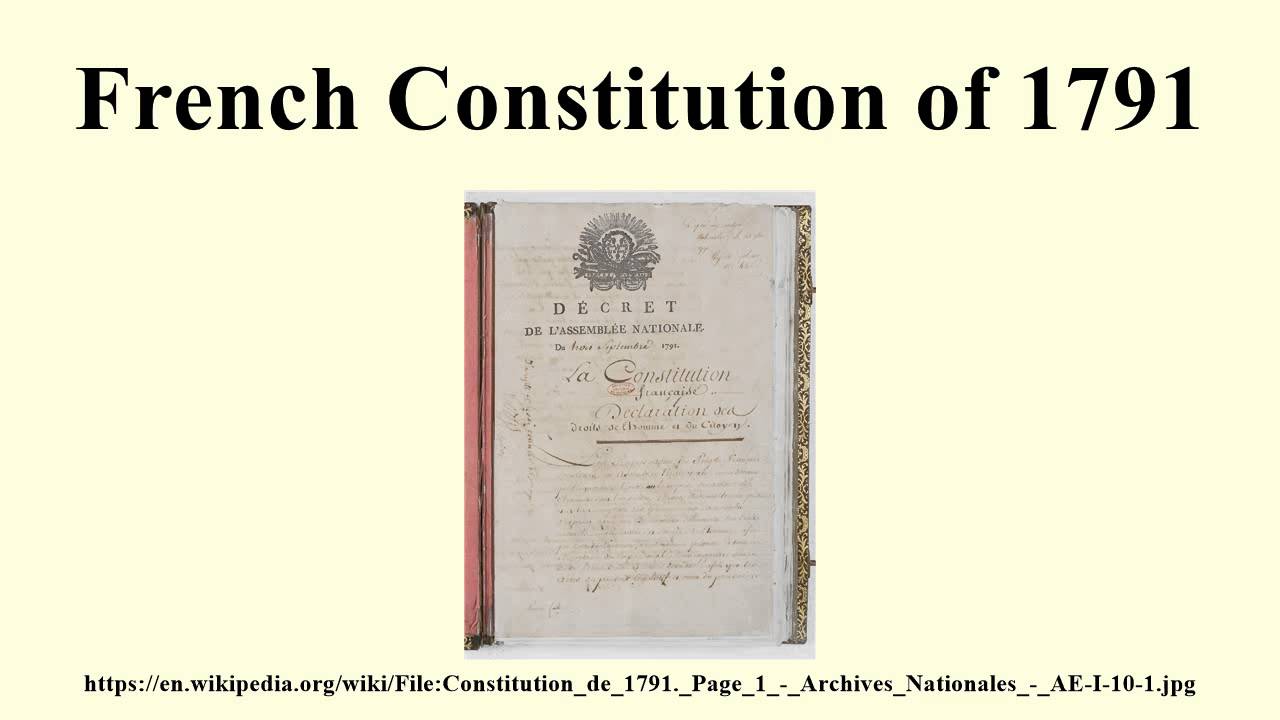The major undertaking of the National Assembly was the Constitution of 1791. To replace the bewildering complex of provincial units that had existed under the Old Regime, the Assembly divided the territory of France into eighty-three departments of approximately equal size; the departments were subdivided into arrondissements, or “districts,” and the districts into communes—that is, municipalities. In the communes and departments, elected councils and officials enjoyed considerable self-government.
The Constitution established an independent, elected judiciary to replace the parlements and other courts of the Old Regime. It vested legislative authority in a single elected chamber. Although the king still headed the executive branch, his actions now required the approval of his ministers.
The ministers, in turn, were responsible only to the king and not to the legislature, as they generally are in a parliamentary or cabinet government. Although the king received the power of veto, it was only a suspensive veto that could block legislation for a maximum of four years. The new constitution undertook to give France a uniform code of law, declared marriage a civil contract rather than a religious sacrament, and promised free public education.
While the constitution of 1791 went a long way toward popular government, implementing slogans of popular sovereignty and social equality, it stopped well short of full democracy. It created two classes of citizens— active and passive—and limited the right of voting to those citizens who annually paid in taxes an amount equal to at least three days’ wages for unskilled labor in their locality.
The passive citizens, numbering about a third of the male population, enjoyed the full protection of the law but did not receive the vote. Moreover, the new legislature was chosen by indirect election. Active citizens voted for electors, who were required to be men of substantial wealth and who ultimately elected the deputies.
But the majority in the National Assembly suffered a fate often experienced by political moderates in a revolution: They were squeezed out by extremists. Despite moderate intentions, the majority were driven to enact some drastic legislation, notably the Civil Constitution of the Clergy, which weakened their own position.
And they failed to develop an effective party organization in the face of the radical minority, called Jacobins. The Jacobins wanted to abolish the monarchy and to set up a republic based on universal suffrage. Their network of political clubs, which extended throughout the provinces, was the only nationwide party organization in France. Almost everywhere, Jacobins captured control of the new department and commune councils.
The defenders of the Old Regime unwittingly helped the Jacobins. After the summer of 1789, alarmed prelates and nobles fled France, leaving behind more rich estates to be confiscated. Many emigres gathered in the German Rhineland to intrigue for Austrian and Russian support of a counterrevolution. The king’s misgivings about the Civil Constitution of the Clergy prompted his disastrous attempt to join the emigres on the Franco- German frontier.
In June 1791, three months before the completion of the new constitution, Louis and Marie Antoinette left the Tuileries disguised as a valet and governess. But a local official along the route recognized Louis; the alarm was sent ahead, and a detachment of troops forced the royal party to make a hot, dusty, dispirited journey back to Paris. After the abortive flight, the revolutionaries viewed Louis XVI as a potential traitor and kept him closely guarded in the Tuileries.

